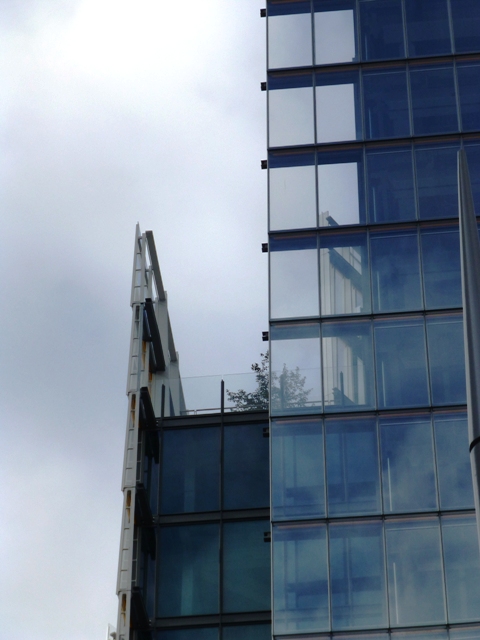southwark – southern defensive works
October 10, 2013
Meet under the canopy of the Shard – this was the instruction for the students studying garden design masterplan (BA Hons Garden Design) and place and culture and masterplanning (BA Hons Landscape Architecture). New start to the term and new project site: The Borough, Southwark. Cold, windy and hard environment here with major works happening to London Bridge station. The Wikipedia reference: Southwark is recorded in the 1086 Domesday Book as Sudweca. The name means “southern defensive work” and is formed from the Old English sūth and weorc. The southern location is in reference to the City of London to the north, seemed appropriate to machinery machinations . . .
. . just a glimpse of a tree and a tempting offer on a station poster.
We intended to cover a semi circle – radius of 1000m centred on the station with first stop at more london . . black Kilkenny limestone defining the strong desire line . . . a busy ‘chunnel’ at 1pm on a working day. We talked about how the space would feel on a Sunday. We hoped/suggested that the students might make a visit then to note changes. I would if this was my major design site . . .
. . . some tumbling and some sitting about and some standing around on scaffolding. Great Fraxinus – they work better here than the more decorative birch . . .
Through Potters Field and on by the London City Mission, we crossed under the tunnels arriving at St Mary Magdelen Churchyard and then into Tanner Street Park. A group of Prunus sargentii were starting the fireworks display of autumn but, these poor trees showed the detrimental effect on plants trying to cope with badly laid paving + kerbs – terrifying hard landscaping. Through Leathermarket Gardens and Guy Street Park and on southwards to Tabard Gardens (lovely, potential here for detailed design – hint, hint) then east to Merrick Square and slowing down, a bit, to enjoy Trinity Church Square. .
. . . through Mint Street Park, we came across this community garden – green roof building and plenty of info for interested visitors. And yes, the baby came too.
On passed Cross Bones Cemetery and the ‘site with most potential’ that is currently a car park prior to development, we swung left down Southwark Street and into Neo Bankside. Many smiles spread across faces here. Maybe because the end was in sight but most likely as this landscape was deemed attractive by those studying – the staff more sceptical, which is their rightful position when analysing landscape projects, . . . . we’ll be doing it all again with the MA students – click here for this. We covered the semi circle ending at Tate Modern – another potential site – in just under 3 hours. So, looking forward to hearing and seeing the group survey presentation on this area, reading the A3 document and getting stuck into individual masterplanning at 1:500. All by the start of December – no pressure, of course. Exciting site will produce imaginative designs. And the poem, well for me it’s about not being precious about the past, allowing some respect but, mainly welcoming the future.
The art of losing isn’t hard to master;
so many things seem filled with the intent
to be lost that their loss is no disaster.
Lose something every day. Accept the fluster
of lost door keys, the hour badly spent.
The art of losing isn’t hard to master.
Then practice losing farther, losing faster:
places, and names, and where it was you meant
to travel. None of these will bring disaster.
I lost my mother’s watch. And look! my last, or
next-to-last, of three loved houses went.
The art of losing isn’t hard to master.
I lost two cities, lovely ones. And, vaster,
some realms I owned, two rivers, a continent.
I miss them, but it wasn’t a disaster.
—Even losing you (the joking voice, a gesture
I love) I shan’t have lied. It’s evident
the art of losing’s not too hard to master
though it may look like (Write it!) like disaster. E Bishop One Art
















October 23, 2013 at 12:30
One of my favorite poems.
I’m always amazed by the changes in London….on the south bank particularly.